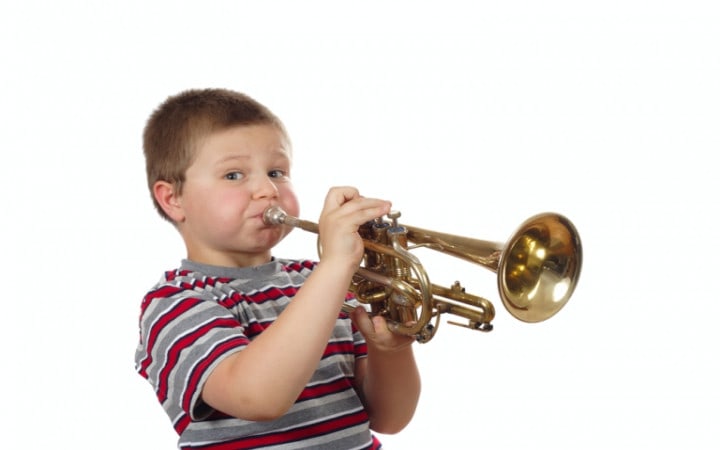Embarking on a Musical Journey: How the Trumpet Is Played
Welcome to the wonderful world of brass instruments, dear parents! If your child has shown an interest in the trumpet, you’re in for a thrilling musical adventure. Understanding how the trumpet is played is the first step in supporting their new passion. Don’t worry; you don’t need to be Louis Armstrong or Alison Balsom to grasp the basics! We’ve put together this beginner-friendly guide that will not only educate but also excite you about the trumpet!
Understanding the Trumpet
The Anatomy of a Trumpet
Before we dive into the mechanics of playing, let’s familiarize ourselves with the trumpet itself. The trumpet consists of three main parts: the mouthpiece, the valves, and the bell. Each part plays a critical role in producing the trumpet’s signature sound.
- Mouthpiece: This is where the sound journey begins. By buzzing their lips against the mouthpiece, trumpeters create the initial vibrations needed to produce sound.
- Valves: These three button-like components change the pitch. By pressing down different combinations of valves, players can alter the length of the trumpet’s tubing, thus changing the note.
- Bell: The flared end of the trumpet amplifies the sound created by the vibrations. The shape and size of the bell can affect the trumpet’s tone and projection.
Posture and Holding the Trumpet
Good posture is essential for playing the trumpet effectively. Encourage your future trumpeter to sit or stand straight, with their chest open and shoulders relaxed. Holding the trumpet properly is also crucial—thumbs should be placed under the leadpipe or on the first valve slide, with fingers resting gently on the valves.
Producing Sound
Embouchure: The Trumpeter’s Secret Weapon
The embouchure is the way a player’s mouth interacts with the mouthpiece. It’s a crucial element of trumpet playing. To create a proper embouchure, the corners of the mouth should be firm, and the center should be relaxed enough to allow for the buzzing of the lips. Have your child practice buzzing without the trumpet first to get a feel for it.
Basic Playing Techniques
Breathing Exercises
Proper breath control is a cornerstone of brass playing. To play the trumpet, your child will need to learn how to take deep, diaphragmatic breaths. The air should fill their lungs fully without lifting the shoulders. Practicing slow, deep breaths will help build the stamina necessary for playing longer passages of music.
First Notes and Simple Tunes
Initially, your child will likely start with a few basic notes. These will often include the notes C, G, and E. Practice with these notes will help them get comfortable with the instrument’s range and the feeling of changing pitches with the valves. Over time, they’ll be able to combine these notes to play simple melodies—a rewarding milestone for any budding musician!
Practice, Patience, and Praise
Remember, learning to play an instrument takes time and patience. Regular practice will be key to your child’s progress, so encouraging a consistent routine is fundamental. Always offer plenty of praise for effort, not just success! Music should be a source of joy, so keeping the experience positive is incredibly important.
The journey of learning how to play the trumpet can be as enriching for you as it is for your child. By understanding the basics laid out in this guide, you can more effectively support their musical development. In the next sections, we’ll explore the nuances of proper care for the trumpet, dive deeper into advanced playing techniques, and offer tips on how to integrate practice sessions into your family’s daily routine. Let the symphony of learning begin!

Five Things Parents Should Know When Preparing for Trumpet Playing
As parents, your role in your child’s trumpet-playing journey is invaluable. Here are five key things you should know to prepare for these melodious times ahead:
- Finding the Right Instrument: A suitable trumpet for beginners is vital. Consider renting or purchasing a student trumpet that is easy to play and maintain. Ensure it’s properly tuned and in good working condition to make learning easier and more enjoyable for your child.
- Getting the Right Accessories: From valve oil to cleaning cloths, having the right maintenance accessories is essential for the trumpet’s longevity and performance. Invest in a sturdy case to protect the instrument and consider a stand for home practice.
- Choosing a Qualified Instructor: A good teacher can make a world of difference. Look for an experienced instructor who is skilled in working with young musicians and can make learning fun. They should offer a structured curriculum and encourage regular practice.
- Understanding Basic Maintenance: Trumpets need regular cleaning and care to keep them sounding their best. Learn the basics of cleaning the mouthpiece, tuning the instrument, and oiling the valves to assist your child in establishing good habits from the start.
- Cultivating a Practice Environment: Setting up a dedicated practice space free from distractions can help your child focus on their practice. Establish a routine that accommodates their schoolwork and extracurricular activities, ensuring they balance their responsibilities with their passion for music.
Supporting your child in these initial stages creates a foundation for their development as trumpeters. So, cheer them on, listen to their practices, and celebrate each new note they master! Your encouragement will echo in the beautiful tunes they’re soon to play.
Proper Care for the Trumpet
Maintaining a trumpet is as important as playing it. The longevity and quality of sound of the instrument depend on how well it is cared for. Teach your child to gently wipe the trumpet after each use, store it properly in its case, and regularly clean the mouthpiece and valves. Professional maintenance should also be scheduled at least once a year.
Advanced Playing Techniques
As your child progresses, they’ll encounter advanced techniques like articulation, dynamic control, and vibrato. Encouraging them to listen to a wide range of trumpet music can inspire them to emulate and learn these skills. An understanding of musical theory will also complement their practical skills, so consider additional music theory lessons if possible.
Integrating Practice Sessions into Daily Routine
Balancing practice with daily life can be a challenge, but it’s important to integrate it in a way that’s sustainable. Work with your child to develop a practice schedule that suits their rhythm and keeps them motivated without feeling overwhelmed. Short, focused practice sessions can be more productive than longer, less frequent ones.
Every moment spent mastering the trumpet is a step toward musical growth. Your involvement as a parent is a special part of your child’s success. Have fun learning together and enjoy the harmonies of this new adventure!
See more great Things to Do with Kids in New Zealand here. For more information see here
Disclaimer
The articles available via our website provide general information only and we strongly urge readers to exercise caution and conduct their own thorough research and fact-checking. The information presented should not be taken as absolute truth, and, to the maximum extent permitted by law, we will not be held liable for any inaccuracies or errors in the content. It is essential for individuals to independently verify and validate the information before making any decisions or taking any actions based on the articles.




